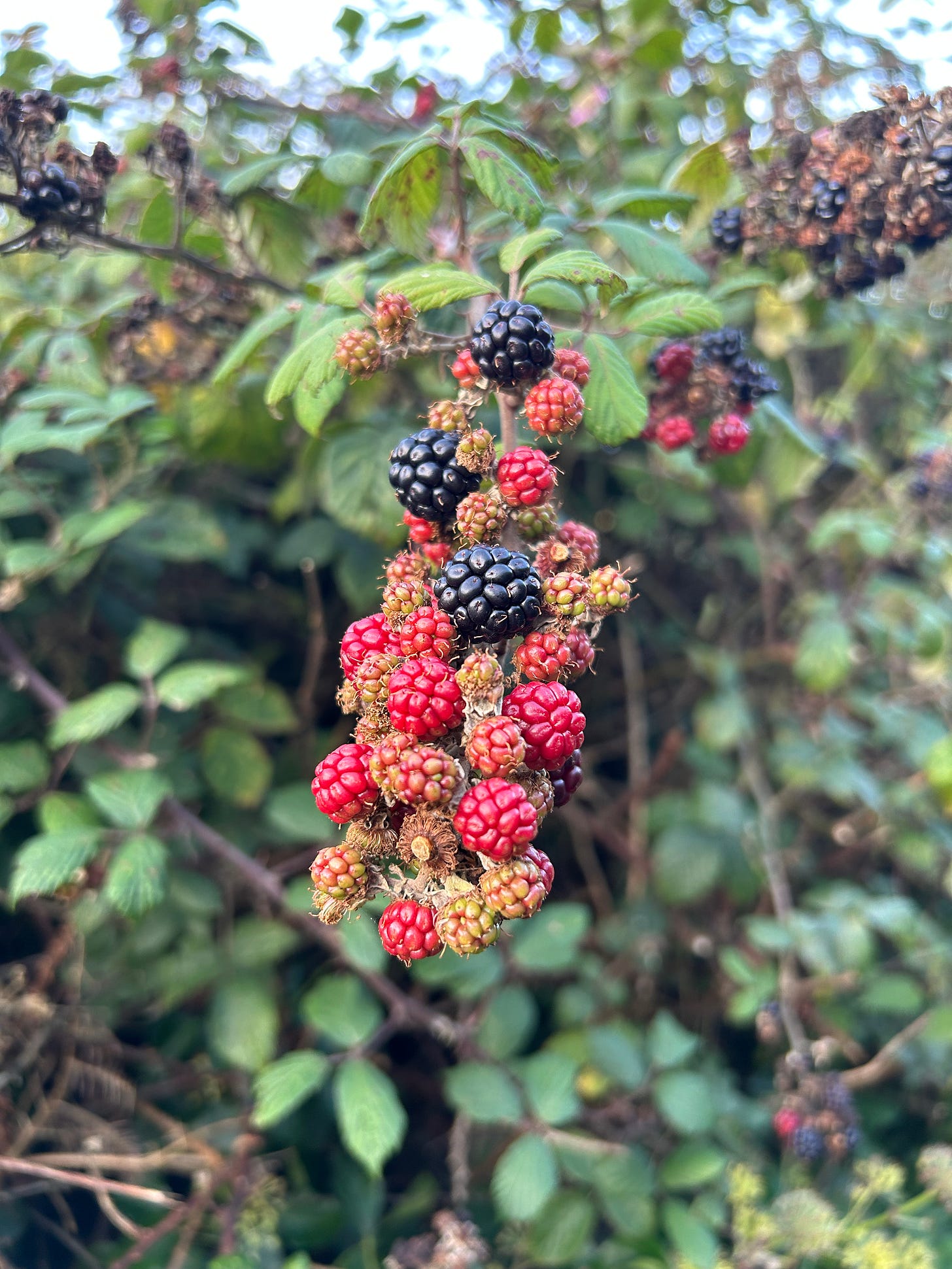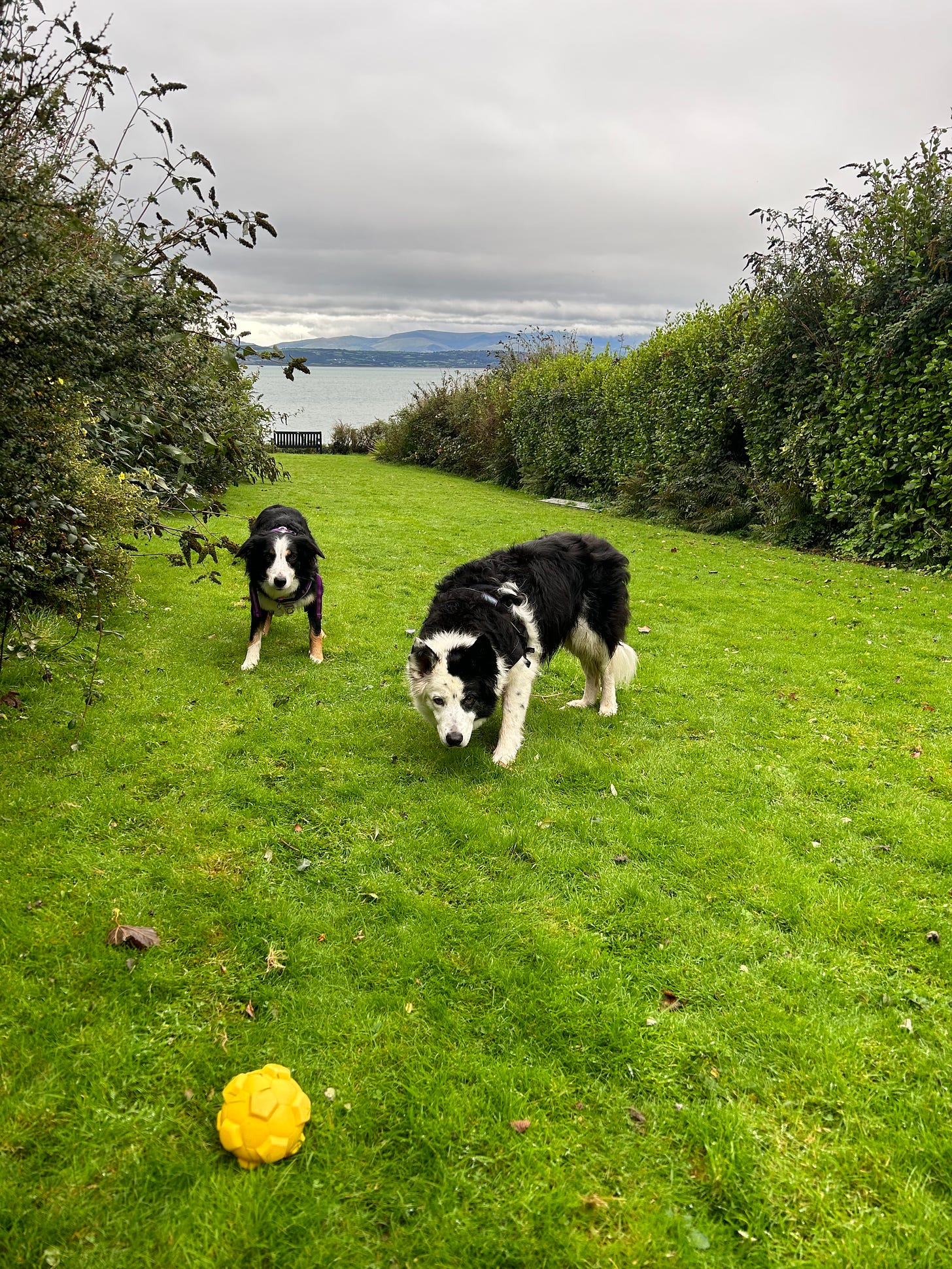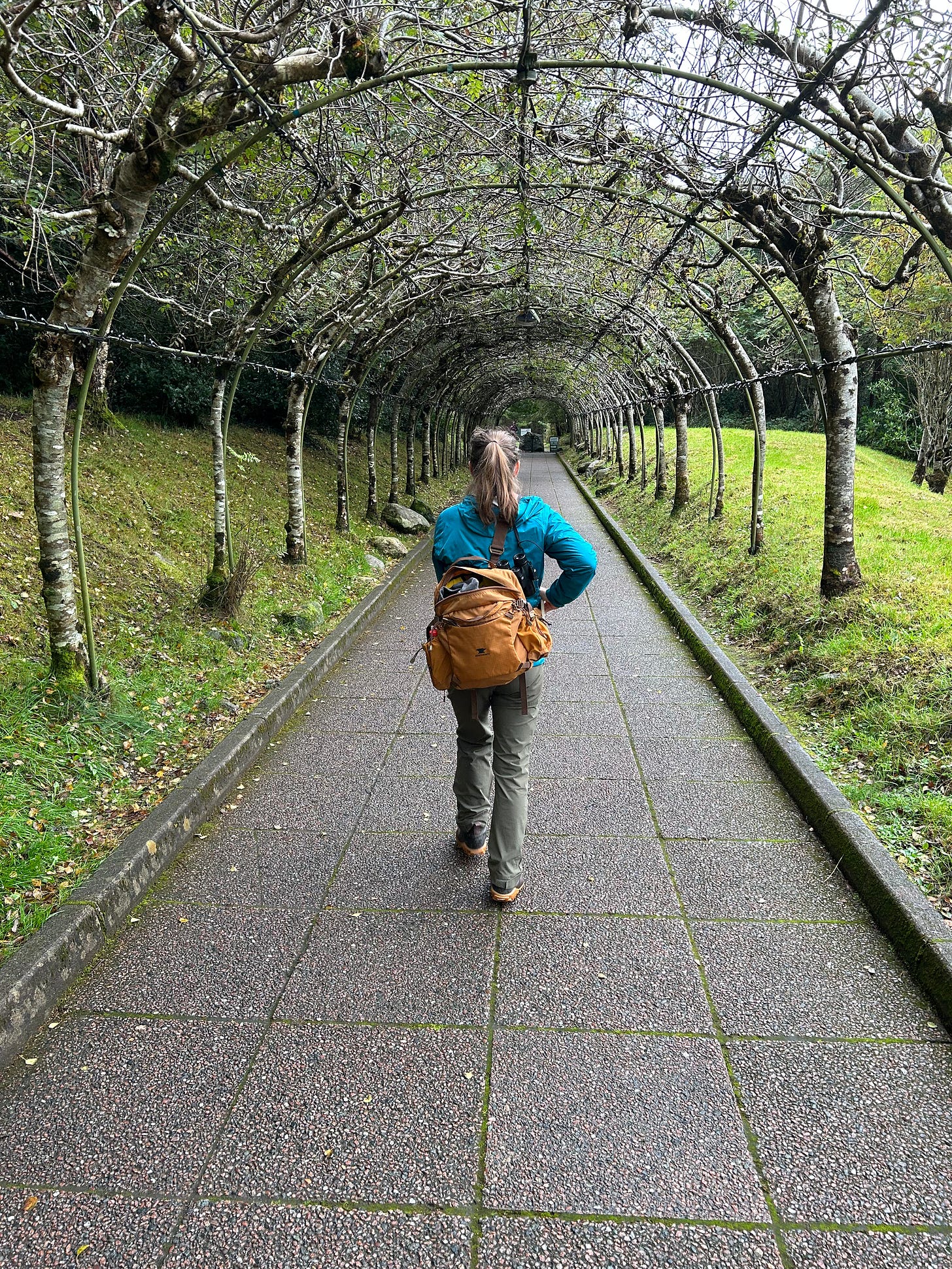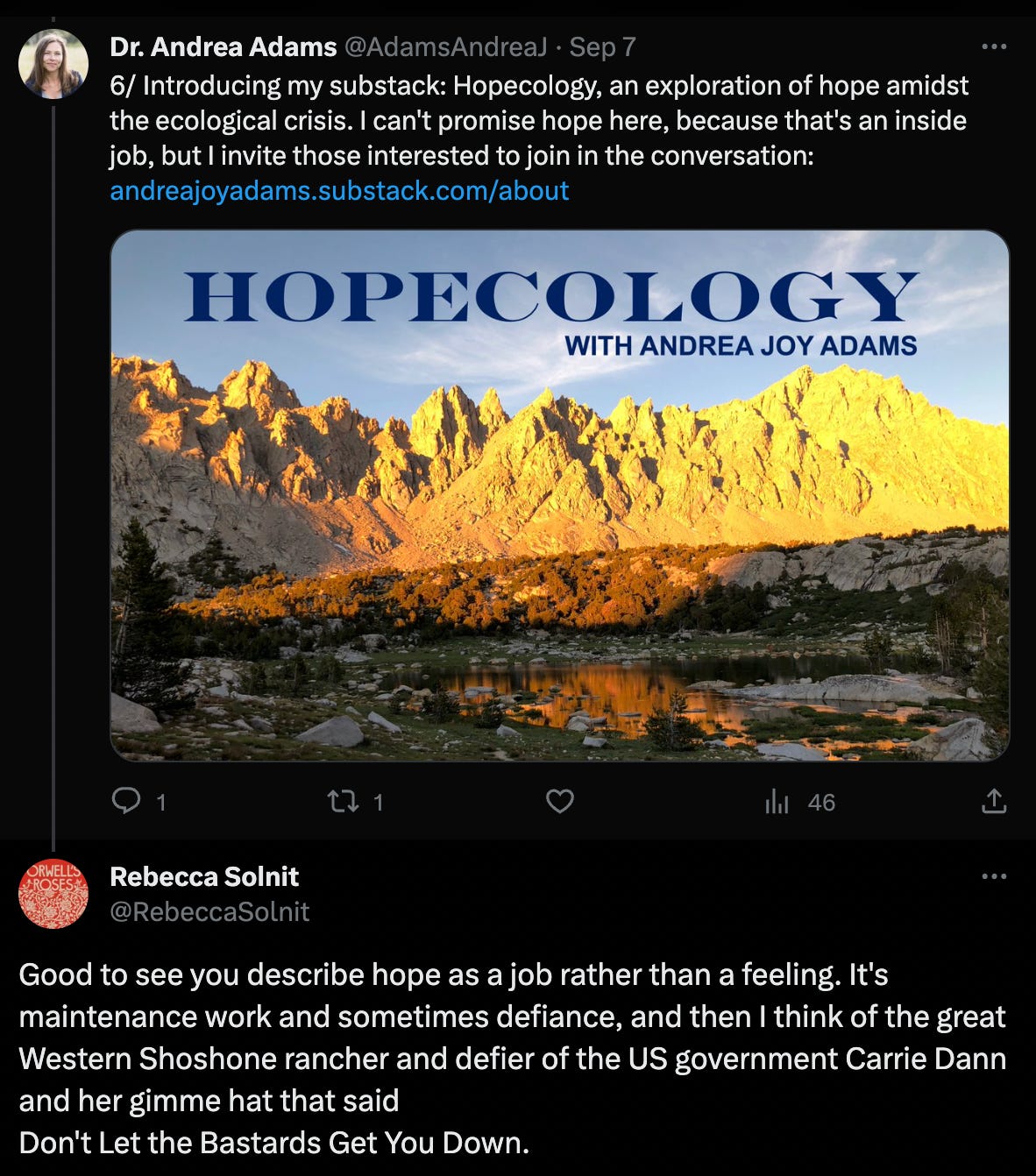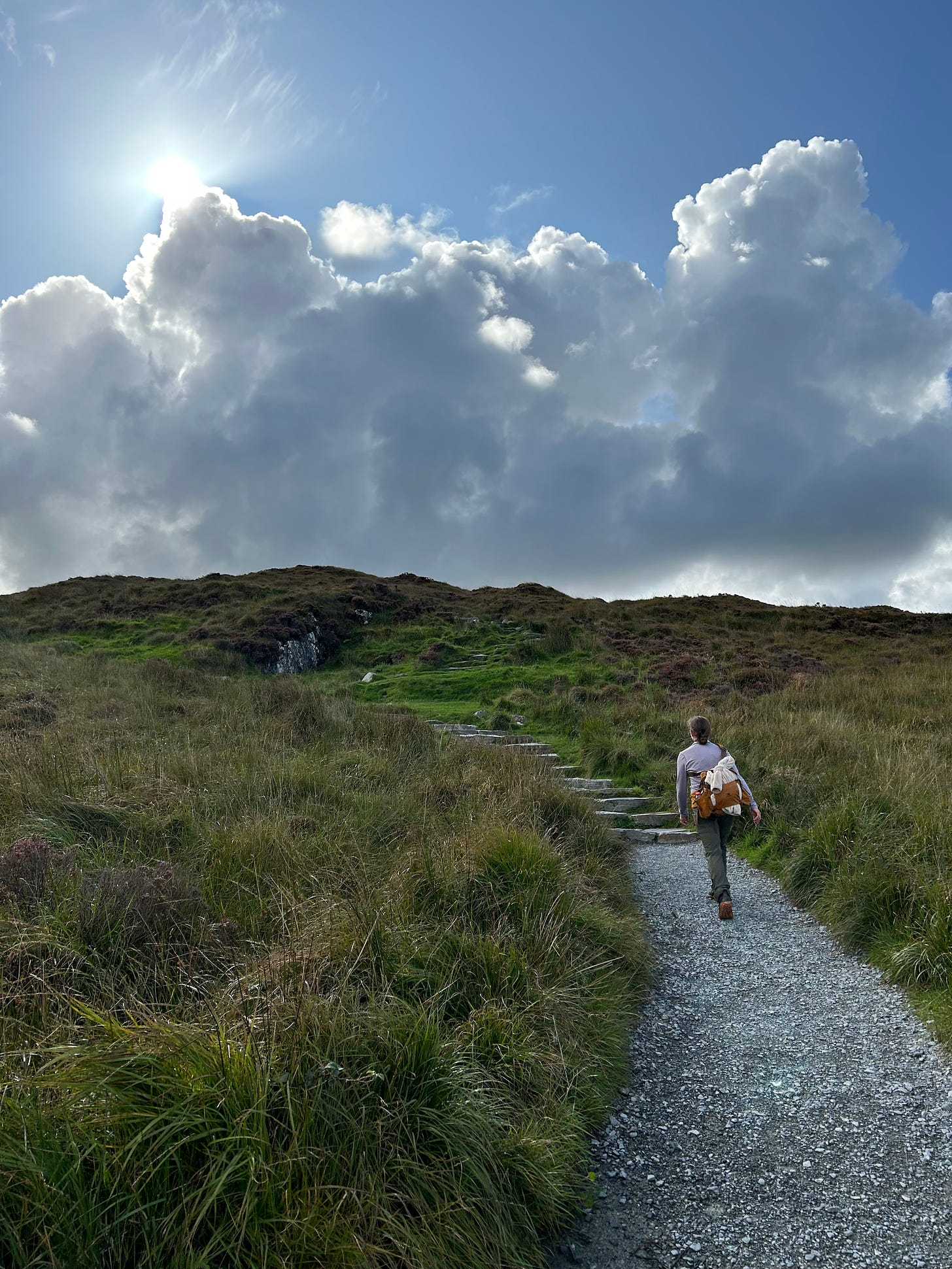You complain about seeing thorny rose bushes;
me, I rejoice and give thanks to the gods
that thorns have roses
- Alphonse Karr, Lettres écrites de mon Jardin, 1853
It’s early fall in the UK, and that means the blackberries—which grace just about every hedgerow around—are in full fruit. The thorny stems they come with, like roses, remind me that everything comes with a cost.
Last weekend I was in Wales, on the island of Anglesey, taking care of a couple of border collies. If you’ve ever spent any time with a border collie, you know that they have boundless energy and need a lot of exercise and stimulation, having been bred for herding sheep endlessly. They are quick, nimble, sleek, and have so much energy it sometimes gives them a maniacal look in their eyes, so eager are they to work.
The collies’ home on Anglesey has a long, narrow garden down to the sea, with 10-foot-high hedges on either side. The bottom half is a large lawn, and several times a day I took the dogs down there to play football (or—as I kept erroneously calling it—soccer). They bring you the ball, set it in front of you, and you have to try to get it past the two highly skilled goalies, who work in tandem: one close so you can’t kick it very hard, and one distant to catch the long passes. The younger of the two, Lila, is so nimble it's fun to watch her acrobatic jumps to catch the ball in midair, so sometimes I took the hit on the dog drool covering my hands in order to pick it up and toss it for her.
My tosses—and Lila’s jumps—kept getting higher. I got a little carried away, and the ball soon landed high in a hedge area riddled with blackberry brambles. Separating some of the branches of the shrub that the blackberries use as their trellis, I peered skyward for the ball as raindrops pattered at my eyeballs. As I leaned in further, thorns dug into my leg and started to tear my rain jacket. I retreated, and picked up a ladder lying on the ground, which I tried to scale to the top, but soon realized that a hedge is not a good support for a ladder, especially when the ground is wet and unlevel.
Frustrated, I continued to get stabbed by and snagged on blackberry brambles that seemed to be reaching for me on their own volition. I grabbed a pair of pruning shears and gardening gloves, then began cutting my way toward the ball as I inched my body upward in the hedge. Having created a small tunnel in the branches for my arm, I eventually got hold of the ball and slowly extracted it as if I were in a wet and high-stakes game of Operation.
Back on the ground, ball in hand, I tossed it for Lila, a bit lower this time. She leapt for joy (she had been very anxious about the wait) and nailed the catch. I felt triumphant. Prior to tossing the ball in the hedge, I had been having kind of a melancholy day. But after retrieving the ball from the brambles, when we continued play, I felt like I could do anything.
I had solved an (admittedly somewhat trivial) problem. I didn’t want to get the ball down; I wanted to abandon it, get the dogs another toy, and then go in from the rain and have a cup of tea and some Hobnobs. But it was their favorite ball; the bad toss was my mistake, and therefore it was my responsibility to correct it. The joy I felt was, in part, the reward of self-efficacy (i.e., confidence to exert control over one’s own behavior, social environment, or motivation): showing oneself, in the words of Glennon Doyle, that we can do hard things.
For the previous two weeks, I didn’t have the usual frustrations of my everyday life at home and work. Though I’ve been working while abroad, I haven’t had to field a bunch of emails or solve crises for anyone or scramble for a deadline because I worked very hard to get much of that stuff done before I left. I walked an average of seven miles a day, but for me walking in nature is the definition leisure time. My life had gotten—dare I say it—fairly comfortable.
And then along came the brambles. They were a small inconvenience, and yet, they were enough to shift my perspective. This is the concept behind stoic philosophy: that small, intentional discomforts eventually increase satisfaction and joy.
Anyone trying to sell you something doesn’t want you to know this, but it is possible to be too comfortable and have a life that is too easy. Think about the most spoiled person you know: are they happy? Or are they one of the more miserable people you’ve encountered? There is a reason we call it “spoiled”: there is a corruption of our character that happens when we get too much of the material pleasures and comforts we think we need.
Huffing and puffing to bliss
Working in the high Sierra one summer, the field site where I lived and worked for 10 days at a time was 16 miles into the backcountry, over three mountain passes, at 10,000 feet. For the first few tours, the hikes in and out were grueling. My body felt like nothing more than an aching sack of flesh as I kept dragging it up and over the mountains, one step at a time, trying to distract myself from my sore feet and cramping shoulders, the bruises on my hips from the backpack belt, and gasping for air as the oxygen plummeted the higher I climbed.
Beginning a new tour of duty one morning, the alpine sun was beating down in the treeless scree as I huffed and puffed my way up to the first pass. Like a fog clearing, I started to feel a sense of lightness and elation and realized I was in one of the happiest times of my life. The discomfort instantly transformed into a deep satisfaction. It’s true that my body was getting stronger and I was reaping the rewards. But the hike was still difficult and painful.
Reflecting back on all of my previous backcountry experiences, I saw the pattern: sunburn, blisters, dehydration, bushwhacking through tamarisk jungles, becoming hypothermic: emerging from all of these, I felt much better than before they happened. It’s as though there is a rebound effect from discomfort. I can’t tell you the number of times (pretty much every time?) I’ve had a cold or flu and later came out of the sickness feeling better than I did going in.
There are religious and secular approaches to this phenomenon. From the secular angle, stoicism encourages conscious discomforts in order to live a richer, happier, more meaning-filled life. This does not need to be extreme, and taking it too far can surely oppose the desired effect. A modern example of stoicism could include not turning the heat on in the car on your way to work in the winter, or wearing one less layer than would make you most comfortable. I’ve tried this out, and it works: the small discomforts are banked for a positive return later. Consciously undertaking difficult tasks improves self-efficacy.
Austerity and intention
I once had to eat nothing but a prescribed liquid for ten days (long story). The hunger pangs like I’d never experienced started to take me on a mental journey that at times felt quite edgy. They would come in waves and then pass, and then return again. I had the calories I needed to survive and (mostly) function, but my nervous system was still on alert, as if to say, Why aren’t you feeding me? I’m sending you all the signals!
One day my thoughts shifted to an imaginary (but also very real) woman, who is in a bad situation and does not have enough to eat, and is having deep hunger pangs. When I thought about her suffering, the fact that my discomfort was a choice became abundantly clear, and my own hunger no longer bothered me. Even though I couldn’t be further from a victim in my own situation, there seemed to be this nearly autonomic physiological-emotional response in my mind of, “Why me?” that made it worse. Thinking of the imaginary/not imaginary woman relieved it, as if to respond, “Why not you?”
Undertaking intentional austerities to make something good (or neutral) out of something bad is usually called sacrifice. Before you get too far down the blood-lambs-and-Isaac train of thought, know that the etymology of “sacrifice” is the Latin sacrum facere, meaning, simply, “to make holy.” “Holy” comes from the proto-Indo-European kohilus, meaning, “healthy” or “whole”. Sacrifice, then—whether religious/ritualistic or secular—is, at its core, intended to mend something broken. All of the examples that come to mind are of mending relationships: with each other, with the planet, with the fragmented parts of ourselves.
The monkey wrench in the sausage factory
In the first edition of Hopecology, I pointed out that part of my endeavor in this newsletter is to look directly at the hard things rather than avoid them. So that means I’m going to write on topics that aren’t necessarily cheerful because it is necessary to be honest if you want any chance at actual—not false—hope.
I was hesitant to use the word “hope” at all in the name of this newsletter because the term has gotten some bad press. The week before I launched Hopecology, I was listening to a Buddhist teacher I respect extoll the virtues of faith over hope. He described faith as enduring, and hope as empty. But the emptiness he was recounting wasn’t hope: it was false hope. I’ve observed that this is what many think of when they hear the word “hope”: empty promises and wishful thinking.
Author, historian and activist Rebecca Solnit has done a lot of paradigm-shattering writing on the topic of hope, so I was delighted when she responded to my social media post announcing the emergence of Hopecology:
She put a point on it: hope is a job. Hope takes work and may entail some (or a lot) of discomfort. It’s not feeling empty guilt about things without taking action. It is not spiritual bypass. It is a daily, moment-to-moment choice, a commitment. Just like a job, the work of the hope cultivation and maintenance program is not always fun. It requires seeing how the sausage is made, so that you know exactly where to throw the monkey wrench in the sausage factory.
Through the looking glass
A friend with a daily blog recently wrote about feeling envious from looking at social media, and I’ve been posting so much about Ireland—a place that she adores—I couldn’t help but think that I might have played a part in prompting the topic. She pointed out the fatal flaw in using social media as a barometer of other people’s lives: it’s usually just the good stuff1.
My posts tend toward the “good stuff” end: not because I’m trying to put rose-colored glass on the windshield of my life; but because when things do hit the fan, I prefer to make like a wounded animal, retreat, and recover in silence. Even though my posts tend to be about beautiful things (because I believe in spreading beauty in the world) there is almost always a subtle or not-so-subtle thorn somewhere: Connemara National Park, for example, is gorgeous but crowded. Yet, like Yosemite, the crowds are worth it. I can create a post complaining about the crowds, or I can rejoice that I get to experience a place so beautiful that it draws people from thousands of miles away to get out and experience nature. In my post about Connemara, I did both: I showed how beautiful it was, but also made a joke about, and comparison to, the crowds in Yosemite.
Similarly, finding hope amidst the environmental crisis means occupying the space somewhere between denial and doomism. Here’s the good news: that is a REALLY big space. Like a friend of mine likes to say, “The hoop you have to jump through is a lot bigger than you think.”
Brambles everywhere
In contrast to the previous two weeks, the past week of travel has been quite thorny. To name just a few: a severe storm delayed the ferry 5 hours; a flight was cancelled; I sprained my ankle (twice); more people than I care to count were extremely rude—and some downright mean—as soon as they found out I’m American. All of these then led to a cascade of other unpleasantries.
I would prefer that none of these things happened. Each moment one occurred, I had a choice: I could sit down and feel sorry for myself about how it wasn’t going my way (which I did make some time for); or I could take the occurrence at face value, realize I can’t change it, and figure out how I’m going to adjust my own mindset so I can get on with my life as effectively and with as little misery (for me or anyone else) as possible.
Zooming out a bit, it’s a “don’t cry over spilled milk” situation. Once the spillage has happened, the action required is clear: there is only cleanup and the onward journey. Will I pour myself another glass? Will I switch to orange juice (maybe I wasn’t really in the mood for milk anyway)? Maybe I’ll just say “forget breakfast” and go for a walk.
Hope’s anchor
In the realm of environmental concern, one can get so wound up about the spilled milk of the problems that the ability to help with cleanup is lost. The spilled milk dramatization would sound like this:
“The milk has SPILLED! Who is at fault for this?! Why, why, why did the milk have to SPILL?! The spill is so HARD for me! I hate having to live in a world where spilling HAPPENS!” Meanwhile, the milk has long since soured, is caking itself into the carpet, and is starting to smell.
This dramatization is an airless room where hope is unlikely germinate because the person has centered themselves, rather than the actual problem. This is not an “us vs. them” issue: it’s human nature to have a little self-pity every once in a while. But that doesn’t mean it’s okay to stay there.
There is room for a healthy amount of discomfort. Milk spills. Storms happen. Flights get cancelled. People judge. Ankles sprain.
“Why me?”
“Why not me?”
Yesterday, thanks to the cancelled flight, I had a couple of hours to wander around Inverness, Scotland in the late afternoon. I walked down a street along the River Ness. A church emerged as I passed a giant sycamore, and in the church yard was a statue with three figures. The inscription on the pedestal reads, “Faith Hope & Charity”; however, the figures, from left to right, occur in the order of Charity, Faith, and Hope. Hope rests her foot on an anchor, providing the stability to engage in other actions.
As a job—not a feeling—hope is work that can anchor us in the storms of life. We don’t derive hope from good things happening; we derive hope from the resilience with which we meet whatever comes our way.
In 2020—the year that many decided to forego the holiday card tradition in tribute to a year that most would be, by New Year’s Eve, calling a “dumpster fire”—I seriously considered creating a holiday card with some of the ugliest moments of the year: various bruises, ugly dog photos, broken housewares, unflattering selfies. Sadly, I chickened out, thinking it might make people feel worse. But what if it made them feel better? If I got a card with a family’s comically unfortunate and hideous moments, I would be so comforted—not through joy at their misfortune—but because it would remind me that I’m not the only one who has a real, messy, sometimes ugly life.




